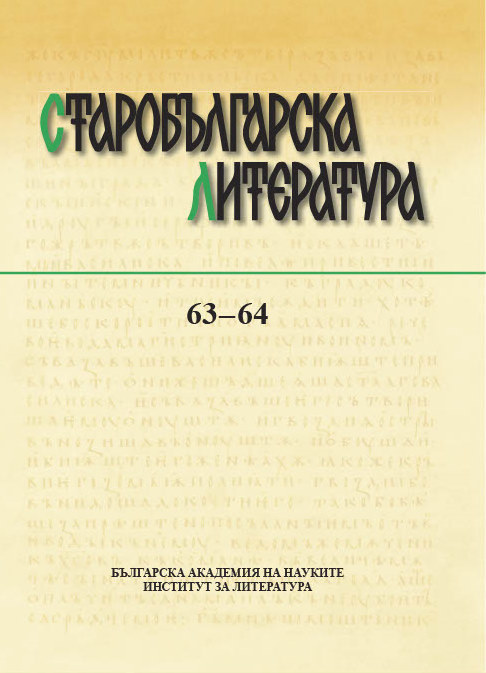
We kindly inform you that, as long as the subject affiliation of our 300.000+ articles is in progress, you might get unsufficient or no results on your third level or second level search. In this case, please broaden your search criteria.

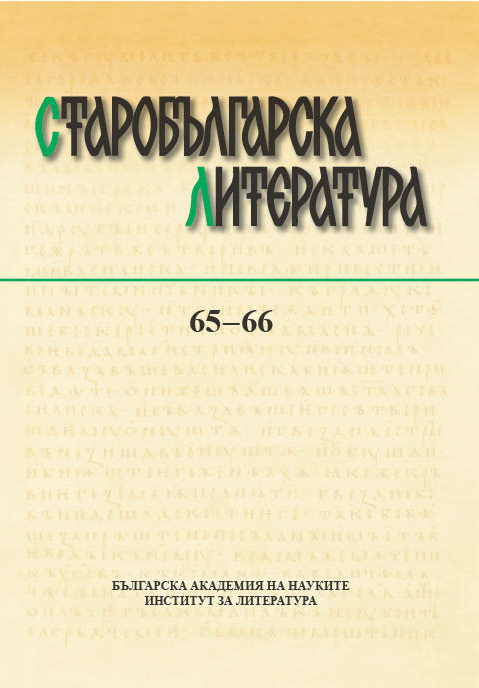
This article presents data on nine synaxarion lives of Bulgarian and Serbian saints contained in one of the few extant copies of the Verse Synaxarion that covers the whole year. This is manuscript No. 47 in the library of the Zograph Monastery on Mount Athos (Zogr47). It is dated between 1473 and 1524, and its redаction is defined as Bulgarian without juses (ѫ, ѧ). It was created by two brothers from the village of Piskopie, near Debar – Yoan and Nikola Miloshev. The manuscript can be divided into two parts: the first part contains the complete Tаrnovo recension of the Verse Synaxarion and is the work of Yoan Miloshev; the second is his brother Nikola’s. The first part includes six original synaxarion lives of Bulgarian and Serbian saints: of St Petka of Tarnovo (14 October), St John of Rila (19 October), St Ilarion of Maglen (21 October), St Michael the Bulgarian (22 November), St Sava of Serbia (14 January), and St Simeon of Serbia (13 February), as well as the text of a translated from Greek verse synaxarion life of St Clement of Ohrid (27 July). The second part begins with the only surviving copy of the First synaxarion life of St Naum of Preslav-Ohrid (23 December), followed by the synaxarion life of the Byzantine saint Erasmus of Ohrid (of Formia). Next are twenty-five Sunday sermons. The inclusion of so many verses about Bulgarian and Serbian saints in one codex makes this manuscript unique. It should be given its due place in research on the Verse Synaxarion. It is a testimony to the perceived need for unity in spiritual activities in the Balkans under foreign rule. The Appendix contains the texts from Zogr47 in calendar order, and variant readings given from the oldest Bulgarian and Serbian copies of the Verse Synaxarion. It can be concluded that the synaxarion verses of the lives of Bulgarian and Serbian saints in Zogr47 preserved the texts without major changes for more than one century.
More...
The article describes the content of the Hilandar manuscript 193, written in the vernacular, and places it in the context of Bulgarian damaskins. The author argues that it is counterproductive to insist on the narrow definition of ‘damaskin’, which denies the right of such manuscripts to be treated together with prototypical damaskins. The manuscript contains one of the three known complete handwritten copies of a miscellany with a focus on spiritually beneficial tales and apocrypha, most of which also circulated prior to their inclusion into the set of five texts that was copied together. The comparison of the most recent of the stories – that about the secret servant of God St. Euphrosynus the Cook – with the older Church Slavonic and Greek textual traditions, makes it possible to capture the specificity of the Early Modern Bulgarian version. In contrast with the older tradition, in which Euphrosynus figures as a despised simpleton, the Early Modern Bulgarian version shows him as a literate man respected from the outset by his brethren. The author suggests that the new image of the saint is in line with the tremendous value attached to literacy and education in the intellectual circles to which the compiler belonged. It is in those circles that the cult of the Slavic Apostles St. St. Cyril and Methodius would eventually be reintroduced among Bulgarians as their national symbol. The distribution of the frescoes, representing Euphrosynus in the Orthodox cultural space, overlaps with that of the miscellanies under discussion only in Mount Athos, which leads the author to believe that the prototype of those miscellanies must have come into being there.
More...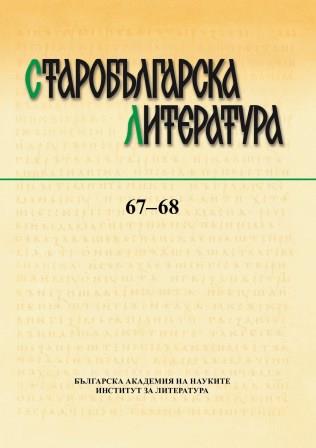


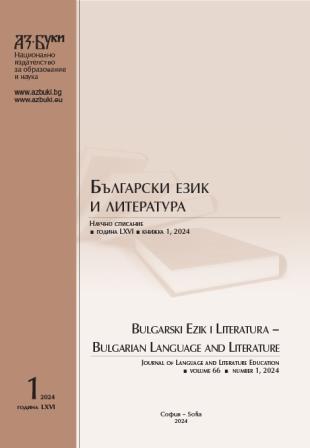
The main goal of the present work is to argue that in the teaching of Bulgarian in school, not only the indicative and the renarrative, but also the other two indirect evidentials – the conclusive and the dubitative – should be included. This is especially true for levels C1 and C2. In fulfillment of this goal, the meanings, forms and main uses of the four evidentials in modern Bulgarian language are examined: indicative, conclusive, renarrative and dubitative. The expressed opinion is that the grammaticalization of evidentiality in the modern Bulgarian language is not a complete process due to two main reasons: the presence of three types of forms for the negative future tenses and the permeability of all composed evidential forms.
More...
The text is focused on the idea of Elin-Pelinov’s short story “The Soul of the Teacher” being included in the curriculum for the 12th grade, and more specifically – in the development of the theme “The choice and the bifurcation”. The argument for the proposal is based, first, on the ironic mode of interpretation of the theme in the story, different from those of the mandatory texts according to the curriculum, with which the quoted theme is presented, thus presenting the possibility to diversify its interpretation. Second, on the productivity of the intertextual connections of the narrative with the other texts united by the theme, and specifically with Yavorov’s “Two Souls”. Third, how the narrative represents Elin Pelin's attitude towards modernist ideas present in the first decade of the 20th century, the emphasis on which is interpreted as a step in the direction of overcoming the stereotypes of reading this work within the limits of social realism.
More...
The article commemorates the 100th anniversary of the birth of Prof. Miroslav Yanakiev. The author defends the thesis that the scientist “setˮ a model of behavior as a linguist – encyclopedist with his own, original position on the issues of linguistics and sciences, related to it, with a truly memorable participation in the development of Bulgarian language teaching and language education in general. His contributions as a scholar are presented, giving him a place as a linguist ahead of his time. First of all, the establishment of the glottometric theory is pointed out, through which he developed Bulgarian linguistics and Bulgarian stylistics in the scientific field. Secondly, the еmphasis is placed on of prof. Yanakiev‘s ability to identify paths, trends that are only now, in our time, beginning to be realized, such as the statements about the role of computers in language teaching. An equally important contribution is the advocacy of the concept of early language learning and multilingualism in school education. And, undoubtedly, of greatest interest is Yanakiev‘s talent for transforming linguistics in semiotics.
More...
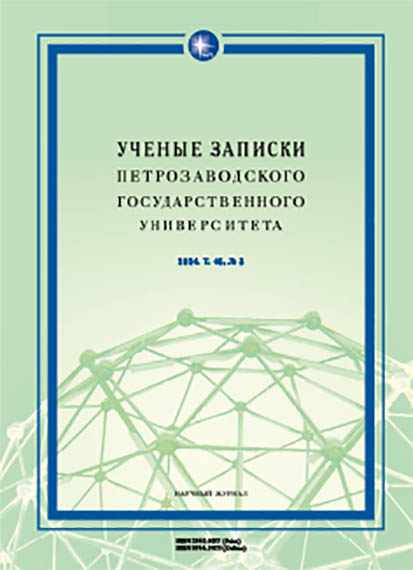
The article provides an overview of Russian language textbooks for foreign learners with specific focus on sociocultural content. This approach helps to identify the main strategies used in educational materials to present culture-specific units across various proficiency levels, tailored to the needs of the intended audience. The study employed various methods including critical discourse analysis, comparison, semiotic analysis, and contextual analysis. The data was drawn from a collection of tagged Russian language textbooks published over the past two decades in Russia and abroad. The study describes the implications of sociocultural and linguocultural units at different levels in educational texts, which serve as potential indicators of text complexity and require specific commentary. The analysis revealed an imbalance in the presentation of historical and contemporary information about Russia and Russian culture, as well as a tendency for greater coverage of humanities in comparison with mathematics or natural sciences. The findings of the study provide insights for drafting recommendations regarding the sociocultural content of contemporary textbooks aimed at L2 Russian learners across different levels of language proficiency, as well as for selecting stimulus material to validate the conclusions through experimental methods.
More...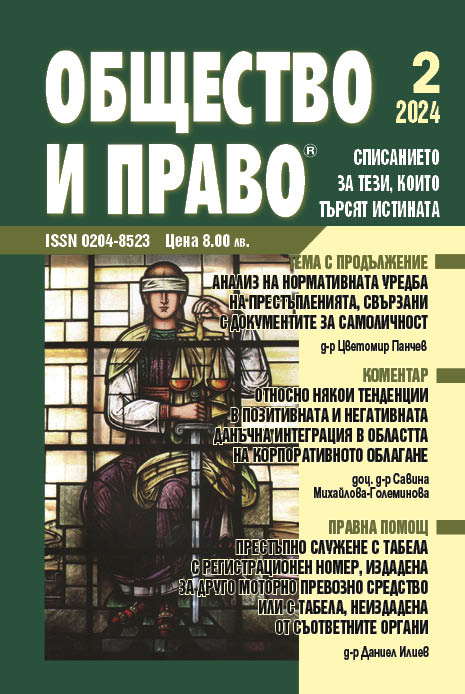
The present writer Ivan Kirilov (1876 – 1936) was graduated law abroad.
More...![El inútil de su hijo: La construcción [DET{det/demost} ADJ de PRON{pos} N] en espanol](/api/image/getissuecoverimage?id=picture_2023_81481.jpg)
The present study explores the construction [DET{det} ADJ of PRON{pos} N] in Spanish, the meaning of which has a valorative attributive character, generally of CRITICISM and INSULT with respect to the propositional content and is typical of a colloquial register. Constructional idioms are characterised by being semi-schematic constructions which have partially free gaps or slots which are not lexically saturated, as well as by their pragmatic component. The aim of the proposal is to offer a description of the productivity and cognitive fixation (entrenchment) of this construction according to the corpus results found. To this end, a morphological and lexical study of the actualisations of its slots will be undertaken, the first of which is adjectival and the second of which is composed of a nominal syntagm consisting of a possessive pronoun and a noun. Furthermore, the use of this construction in Spanish will be systematised and its peculiar structure will be described; it is composed of a definite article that acts as a head, followed by an adjective, which, rather than being the referential core, has an expressive, evaluative, and focalising value on the NP of the second part of the construction, preceded by the preposition de. The restrictions and preferences of its slots will also be described. This type of construction, which occupies an intermediate position in the lexico-grammatical continuum of the language system, has rarely been studied so far in the case of Spanish. The present study would fill this gap in research by implementing a corpus-based methodology.
More...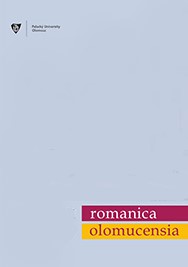
This article seeks to analyse some aspects and modalities of the writing of surpassing, in Abdelkébir Khatibi, a Moroccan sociologist and writer. On the basis of a corpus of texts by the author (essays and works of fiction), it will be shown that Abdelkébir Khatibi gives a new dynamic to Maghrebian literature by contributing to the themes of the decentring and deterritorialisation of Moroccan being. The aim is to see how writing is a place of contemporary questioning close to those raised in postcolonial studies. Thus, it will first deal with the author's representation of identity and expose the criticisms that he addresses of the identity huis-clos in the East and logocentrism in the West. Then the focus will shift to the notion of bi-language as a decentring of the idea of a unitary 'one' in Khatibi's thought. At this level, the extent to which bi-language, like the thought-other, is part of the author's double critique of the doxa, of the Arab cultural heritage and of the Western episteme, will be shown. On the other hand, the narration of bi-language in the novel Amour bilingue will be dealt with. Finally, foreignness as a quest for the Other and an unconditional opening to interculturality will be analysed.
More...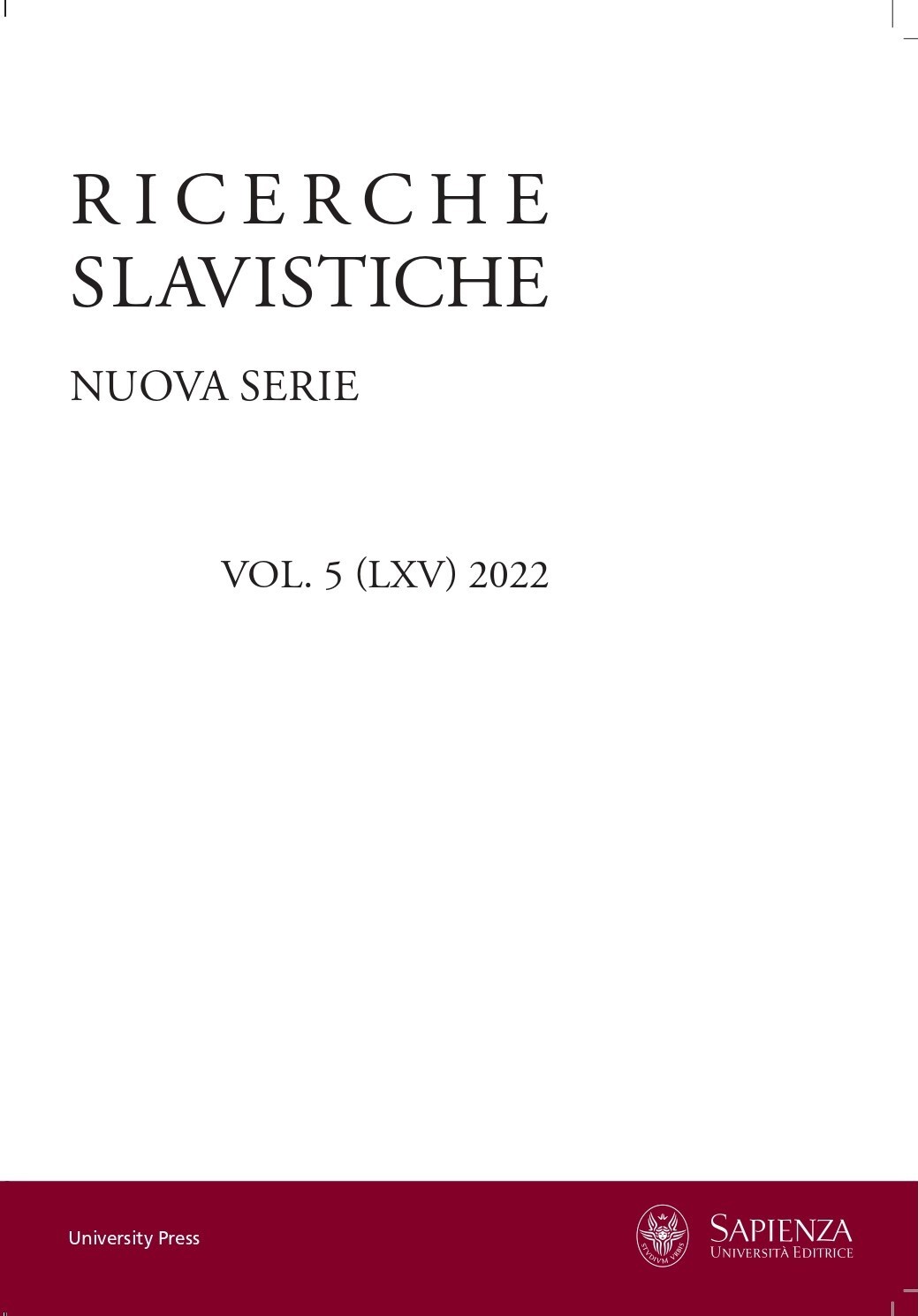
The survey is focused on the presence of essays regarding Slovene culture and language in the Italian journal “Ricerche slavistiche”, during its full seventy years of history, from the beginning to the present time. More specifically, it will establish the amount, typology and continuity of those contributions, trying at the same time to determine how their presence unfolded and developed. Although basically a descriptive survey, an attempt to evaluate the meaning of their presence in the journal will also be made. There were forty Slovene-focused essays published in the journal, unevenly distributed over the time period considered: just a dozen in the first fifty years, whereas in the last twenty years (from 2003 on) there is a very sharp increase in number,entirely due, we must say, to the publication of two special issues, both covering the proceedings of two conferences on Slovene Studies. On the other hand, data clearly shows that the scientific value is constantly high and the typological range constantly wide, throughout the seventy years of life of the journal. From the very beginning, in fact, we find names of prominent scholars, together with younger ones that will become well-known in due time. In both cases, they published interesting and groundbreaking work. In the survey, in the case of people (and research) more distant in time, we provided a detailed context, investigating their relationships, even the personal ones, with Slovene scholars in Italian universities (such as Rome, Padua, Naples and, obviously, Trieste), or viceversa. Instead, in the case of colleagues closer to us in time, we thought it more useful to describe – although in a cursory and rather sketchy way – the content of their research. To summarize, we can say that the oldest Italian journal of Slavic Studies seems to mirror the familiar state of affairs of Slovene Studies in Italy: although scarce in quantity, especially in the first five decades, and somewhat discontinuous, nonetheless the value is good or even excellent, thanks to scholars working either in Slovenia and in Italy, or even in both countries.
More...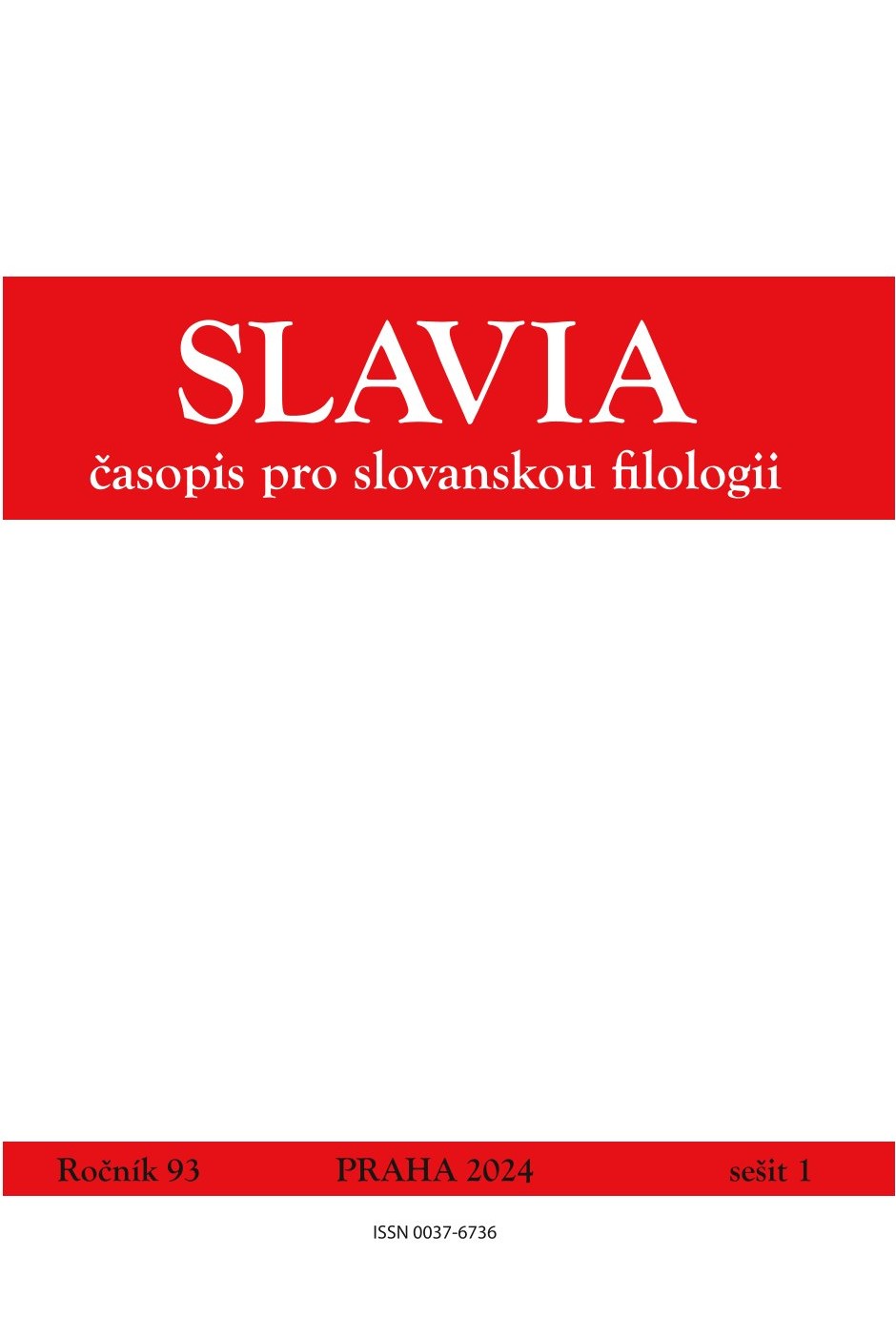
The article is devoted to some aspects of the chronotope of the novel My children by Guzel Yakhina. This study attempts to determine constitutive elements, which co-create chronotopic structure of the text. The aim is to deepen the insight into the functioning of the space-time units in the fictional world of the novel. Specifically, through a detailed analysis of the constellation of the main character’s communicative vectors within each of the chronotopes, the article investigates the impact of these communication focuses on the interconnected space-time units. In this context, communicative vector is defined as a range, direction and intensity of ongoing communication processes of the speaker. The analysis describes in detail how the main protagonist executes his communicative vectors in the text. The study then shows the key importance of these processes for the chronotopic structure of the novel.
More...
The paper focuses on the key literary concepts of N. S. Trubetzkoy and P. N. Savitsky. The main aim is to analyze their Eurasianist approach to the field of Literary Studies and the methodology of interwar Russian Formalism. The study is based on selected primary texts written by Trubetzkoy and Savitsky in the 1920s and 1930s and supplemented by their private correspondence with other interwar Eurasianists and Russian Formalists.
More...
In the article, I review the most recent monographs on Slavic mythology published in the Slovak academic sphere. Since the research in the field of mythology is actively done mostly by linguists and literary scholars, I focus on the contributions from these disciplines. The most fundamental works are the papers and monographs by Martin Golema. In the study, I consider his influence on the contemporary Slavic Studies and young researchers. Special attention is paid to the monograph by Ľubomír Gábor, whose methodological approach is based on Golema’s works. Among the authors, who contributed to the recent research of Slavic mythology in Slovakia, Martin Pukanec is worth mentioning. Pukanec’s work is therefore further discussed in the article. Analyzing his work allows us to see the current state of Slavic mythology from the Slovak perspective and further discuss it.
More...
In the personal archival collection of Konstantin Irechek (Jireček), which is stored in the Scien- tific Archive of the BAS, there are 40 letters and postcards, handwritten and sent by Ivan (Jan) Brozhka (Brožka) to Irechek. The Czech Brozhka (1853–1927), a teacher of Latin at Sofia high schools for a long time, also considered the founder of classical philology in Bulgaria, was an active assistant to Irechek in various cultural and educational endeavours immediately after the Liberation. The letters cover the period from 1885 to 1900 and have great informative value: they contain information about all the most important events that happened not only in Sofia, where Brozhka settled, but also all over the country. The significance of these notices doesn´t lie in their uniqueness, it mainly consists in the fact that they present moments of the modern Bulgarian history through the eyes of a foreigner who had already begun to perceive Bulgaria as his second homeland. Here I present one of the most interesting letters in translation – dated November 10/22, 1885, describing the stormy events of the first week of the Serbo-Bulgarian War – both at the front and in Sofia.
More...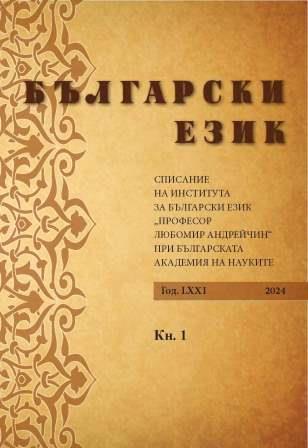
The book consists of 14 studies arranged according to the chronological order of the publication of the 14 letter-writing manuals discussed in them, which appeared between the 1830s and the 1870s.
More...